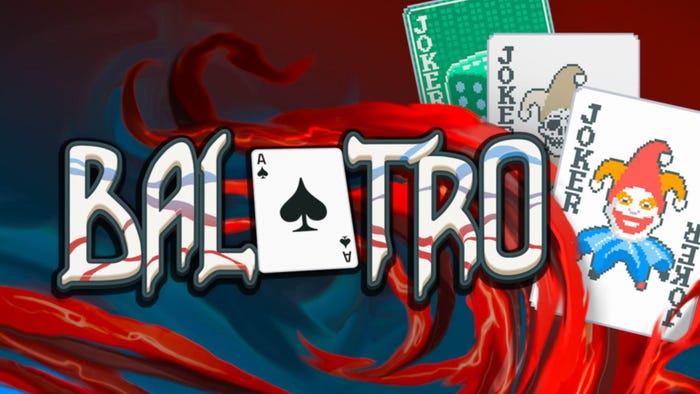
Featured Blog | This community-written post highlights the best of what the game industry has to offer. Read more like it on the Game Developer Blogs.
Why ‘Worse is Better’ for Early Access Games
How Richard P. Gabriel’s concepts of 'Worse is Better' can be applied to Early Access Games to explain the growing trend of these releases on Steam.

Early Access games – the latest trend in PC gaming. They allow gamers to pay for access to an unfinished product that draws upon its user’s feedback and funding to steer the game to completion. Often labelled as a ‘paid-Beta’, Early Access titles are proving to be a divisive topic between players, developers and the games media. However, as the number of new Early Access releases on Steam and other platforms increases it would seem that the format is set to continue for the foreseeable future.
So why is Early Access currently so popular? The benefits of Early Access for developers and consumers have been discussed before, but I think there are more answers to be found amongst Richard P. Gabriel’s thoughts on software acceptance, summarised by his phrase “Worse is Better”.
What is ‘Worse’?
In his essay from 1989, Lisp programmer Richard P. Gabriel wrote a section titled "The Rise of 'Worse is Better” where he described the concept of accepting a ‘worse’ solution to a problem, rather than the supposedly ‘right-thing’ to do. In this example, a ‘worse’ solution is one that is simple and limited in functionality compared to the ‘right-thing’ which is more complex and functional.
The core of Gabriel’s argument is that quality is not necessarily improved as functionality is increased, as software that can be used simply for a limited purpose will often be more accepted by users due to its practicality and usability. Crucially, ‘worse’ programs can be crafted and adapted at a much quicker rate compared to the ‘right-thing’, which likely faces longer iteration and usability testing times to function at its desired complex level.
Increased delivery speed leads to an increased use rate as more users adopt the ‘worse’ solution in favour of the unavailable ‘right-thing’. Gabriel describes this adoption process as a ‘viral’ outbreak due to the nature in which the program is spread through word of mouth and existing use, eventually leading to widespread acceptance. Once accepted, there may be pressure from users to expand the functionality but they have already been conditioned to accept ‘worse’ rather than the ‘right-thing’.
In time, the ‘worse’ program will ultimately become the ‘right-thing’ as it is adapted to cater to the increased functionality demands and requirements of its now diverse user base. With this in mind, let’s now look at how this applies to Early Access games.
Early Access Games are ‘Worse’
When considering the benefits of Early Access, many commentators are quick to point out the financial benefits for small developers that the scheme affords them to produce their vision. Users are also empowered by a sense of contribution to a project that they are presumably interested in, be it through feedback or funding, as well as ‘rewarded’ through the titular Early Access to the game.
The game that the users have access to in those early days is a limited and often simplistic program, lacking the intended functionality required to adhere to the developer’s vision of a complete product. According to Gabriel’s terms, such a game should be considered ‘worse’ due to its lack of functionality and an adherence to his principle that “Completeness can be sacrificed in favor of any other quality”.
Taking the comparison further, the simplicity of ‘worse’ programs allows for quicker production rates that can be more readily adapted upon. As project scopes for games become greater, so too does the time in which it takes to complete them, but Early Access titles often boast of a more immediate feedback loop with their customers and consequently a potentially quicker iteration speed.
As mentioned earlier, the quicker a product can be released, the faster the use rate of that product can be increased, particularly in the absence of the ‘right-thing’. In the case of Early Access, developers can quickly push out the simple version of their game with the intentions of generating a user base to expand upon with further updates.
With a user base established, the hope will be to foster a community with these users that in turn increases the product’s visibility and incoming revenue. The importance of YouTube ‘Let’s Play’ videos and community word of mouth is crucial to the success of many modern Indie titles in the industry now. In our time of viral marketing campaigns, Gabriel’s 1989 description of the adoption of his ‘worse’ programs as a virus outbreak is eerily prophetic.
There are ‘Worse’ problems to have...
So as a means of funding and promoting a project, Early Access has clear benefits for developers, but it is not without its risks and pressures. Releasing a ‘worse’ version of a game can have a detrimental effect on the all important first impressions of a product that is missing key functionality, potentially preventing the project to gain widespread user acceptance.
If a developer is successful at fostering a community, they are then under pressure to satisfy their expectations and avoid game fatigue for fear of losing their customer base. This may lead to compromises from developers on their original vision of the project and what they deliver in the long run, not to mention risk being at odds with the proposal which enticed their first adopters. Such compromises may prevent the final product ever being the ‘right-thing’ that its developers and users wanted it to be.
For Better or for ‘Worse’
When viewed in comparison with Gabriel’s concepts of software acceptance it may be easier to understand why Early Access is considered so divisive within the industry and amongst consumers. The greatest benefit of Early Access, when regarded as ‘worse’, is that it allows for quicker introduction and adoption from users with the ambition of widespread acceptance. It is a process that can provide improved revenue and marketing for smaller development projects that may allow them to compete for sales alongside the bigger budget productions.
However, it is not hard to imagine the Early Access scheme being exploited to facilitate the hurried release of a lesser product to reach the market ahead of an anticipated title. The viral success of the original DayZ mod soon led to a lot of similar products available on Early Access, perhaps looking to capitalise on the game’s popularity. Sadly, a similar precedent for this has already occurred in the mobile games market which has seen its fair share of clones and copy-cats looking to cash in on other’s success.
As the latest process that opens up the financial possibilities for games development to a wider range of users, Early Access will only lead to a more diverse collection of products available on the market. As it continues to gain more acceptance as a process, so too will the products created under the Early Access scheme, until eventually they may even be considered the ‘right-thing’. However, to achieve this goal, concerns regarding the honour system that currently revolves around Early Access transactions and user commitments to unfinished products will have to be overcome.
These concerns actually highlight the important reliance developers and consumers share with one another, and how Early Access may be leading the way to a more harmonious relationship with products that are usually more informed and tuned to their user’s needs when finally released. Whatever the ‘right-thing’ of future games development is, it will have to maintain this often fractious relationship if the industry is to continue its success. In this case, Early Access may be ‘worse’, but that does not mean that it is wrong.
This blog was originally posted on my personal website here.
Read more about:
Featured BlogsAbout the Author(s)
You May Also Like












